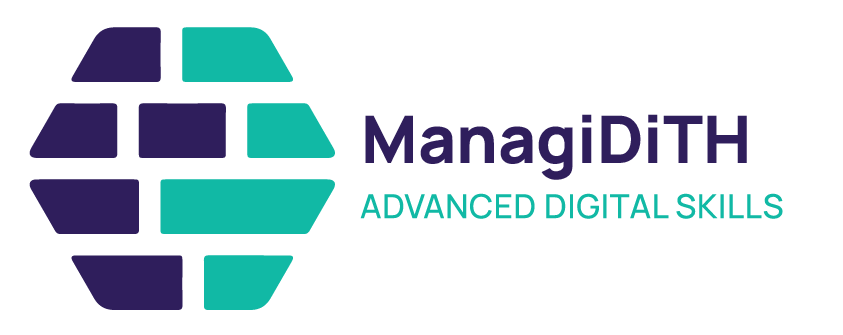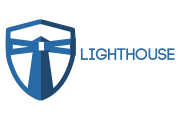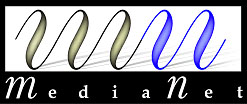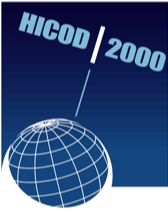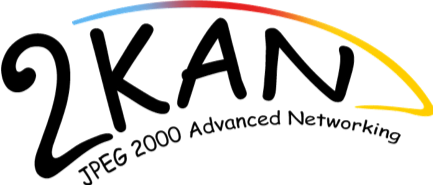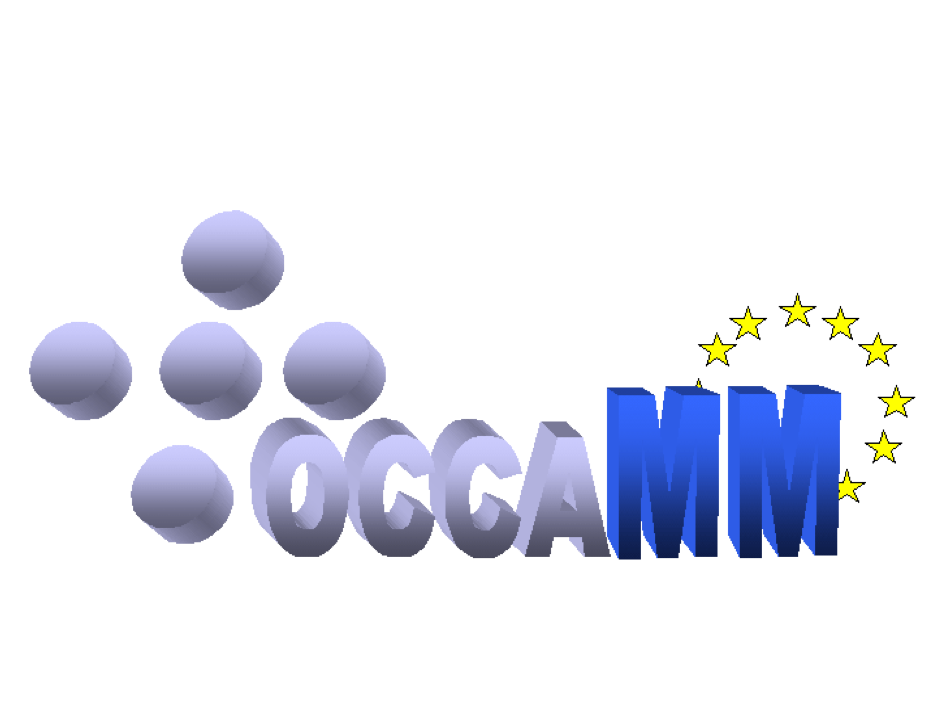Crossing the Atlantic for Scientific and Teaching-Learning Cooperation
Researcher
The main objective of the AtlanticCrossing proposal is to develop a partnership between two higher education institutions, one Portuguese, Iscte – University Institute of Lisbon, and one from the United States of America, Bridgewater State University - BSU. This partnership is designed to be mutually beneficial, aiming to initiate the effort to develop joint specializations, postgraduate programs, and the awarding of joint academic degrees in the near future in scientific areas of mutual interest, such as Cybersecurity, Artificial Intelligence, and Language Technologies, Business Innovation, and Teaching-Learning. By collaborating, both institutions could leverage each other’s strengths and resources, enhancing the quality of education and research. The proposal also aims to develop skills for faculty and students through Collaborative Online International Learning (COIL), applied in Curricular Units (CUs) of undergraduate courses at both universities, focusing on the aforementioned scientific areas. The program includes activities throughout the academic year in a COIL environment and two short-term stays (1 week) for faculty and students: one organized at Iscte in mid-January, with the visit of BSU faculty and students, and the other at BSU, at the first week of June, reciprocally. We will coordinate joint and interdisciplinary research projects with an emphasis on Cybersecurity and Language Technologies. This will be conducted within the framework of project-based and applied research initiatives. Additionally, we will facilitate Iscte’s participation in BSU's annual Undergraduate Research Symposium, providing a platform for Iscte students to present their innovative results at this US event. In the field of Cybersecurity, we will organize comprehensive joint training sessions employing challenge-based and competitive environments, such as “Capture the Flag” and “Hackathon”. We will utilize BSU's CyberRange infrastructure - an exclusive resource in Massachusetts—...
Project Information
2024-10-01
2025-06-30
Project Partners
- ISTAR-Iscte (DLS) - Leader
- BSU - (United States of America)
Decentralize Portugal with blockchain agenda
Researcher
Blockchain is a key technology for economy and society digital transition. According to the World Economic Forum, 10% of global GDP will be stored in blockchains by 2027 and the World Trade Organization, citing a study by Gartner, estimates that by 2030 the use of blockchain technology could add $3 trillion to international trade. According to PwC "blockchain technologies can boost the global economy by $1.76 trillion by 2030" with the sectors that will benefit most being public administration, education, and health.
Despite this huge opportunity, Portugal has yet to take advantage of it: according to the EU Blockchain Ecosystem Development report, in 2020 Portugal holds an average maturity at European level.
This Agenda brought together several blockchain organizations, creating a cluster of 24 Portuguese blockchain companies, 15 Research and Technology Organisations (RTO), 5 Public Entities, 2 Associations and 10 other Associated Partners, connected by business and technology, aiming to become global players and, thus, contributing to a significant change in the specialization profile of the Portuguese economy, by investing on cutting-edge technology and hiring highly qualified personnel.
Master's Degree of Managing Digital Transformation in the Health Sector
Researcher
The Master's Degree in Managing Digital Transformation in the Health Sector (ManagiDiTH) is an innovative initiative in the European educational panorama, the result of a project financed by the European Union and led by the School of Applied Digital Technologies (Iscte-Sintra), in collaboration with two other universities: the Laurea - University of Applied Sciences, in Finland, and the AUTH - Aristotle University of Thessaloniki, in Greece.
This Master's degree aims to train future professionals, both in the technological and healthcare areas, with essential skills to face the challenges and opportunities that the digital era brings to the healthcare sector. Given the rapid acceleration of technological development, there is an urgent need to equip professionals with the necessary tools to navigate this constantly evolving scenario.
With a multidisciplinary and innovative curriculum, the ManagiDiTH master's degree integrates three fundamental components: societal, digital and health. Furthermore, students can choose between two areas of specialization: Data Science or Interoperability. This flexibility allows each student to personalize their training according to their interests and professional aspirations. Thus, students have the opportunity to deepen their knowledge in areas such as artificial intelligence, virtual reality, automation, cybersecurity and other emerging technologies that are redefining the way healthcare services are provided and managed.
The study program, consisting of three semesters with a total of 90 ECTS, provides a solid theoretical basis combined with practical experiences and real projects in the sector. Teaching is taught in English, following the most recent pedagogical guidelines related to Distance Learning, which allows the participation of students of different origins and nationalities. The highly specialized teaching staff, coming from diverse academic and professional backgrounds, constitutes an added value of this master's ...
Project Information
2023-01-01
2026-12-31
Project Partners
- Iscte
- LAUREA - (Finland)
- AUTH - (Greece)
- UNI EIFFEL - (France)
- IT-IUL - (Portugal)
- Clinipower - (Finland)
- Whymob - (Portugal)
- MundiConsulting - (Portugal)
AI-based mobile applications for public health response
Researcher
The FCT project DSAIPA/AI/0122/2020 AIMHealth – AI-based Mobile Applications for Public Health Response, is being promoted by the Information Sciences, Technologies and Architecture Research Center (ISTAR-Iscte), in collaboration with the Center for Psychological Research and Social Intervention (CIS-Iscte), both from Iscte – University Institute of Lisbon, and as well with the Institute of Telecommunications (IT), the Association for Research and Development of the Faculty of Medicine of the University of Lisbon (AIDFM) and the Cardiovascular Center of the University of Lisbon (CCUL).
This project is funded by the Foundation for Science and Technology (FCT), according to the FCT contract DSAIPA/AI/0122/2020 under the contest “AI 4 COVID-19: Data Science and Artificial Intelligence in the Public Administration to strengthen the fight against COVID-19 and future pandemics – 2020″.
Framework
Due to the COVID-19 pandemic, personal contacts were limited, and new solutions had to be developed to prevent the spread of the virus. Some of the technological solutions presented were contact tracing applications, which inform users and authorities about the potential or current risk of spreading the virus. However, among its users, this approach has raised concerns about security and privacy.
Objective
Encompassing such concerns, this project proposes the creation and availability of a smartphone application and a safe and reliable service distribution platform based on Blockchain and Artificial Intelligence technologies, to identify symptomatic and asymptomatic patients as well as the risk exposure, providing a preventive approach to Public Health strategies.
Project Information
2021-01-25
2023-01-24
Project Partners
- ISTAR-Iscte (DLS)
- IT - (Portugal)
- AIDFM - (Portugal)
Data Science for non-programmers
Researcher
The objective of this project is to explore the use of visual programming paradigms to enable non-programmers to be part of the Data Science workforce.
In contrast to existing approaches, which require programming, Scientific Workflow Management Systems (SWMS) can become an alternative to support the visual programming of data science projects. Such systems (e.g. Taverna and Kepler) use a simple graphical, graph-based structure to develop applications.
This simplicity has shown to be suitable in several scientific areas such as bioinformatics, geophysics, and climate analysis. Despite the success of SWMS in data intensive research, they did not reach a state where non-programmers data scientists can use them. They still require some programming and scripting skills to code individual processing tasks. That is why research teams using those systems are usually composed of scientists and software developers.
We propose to extend current SWMS to support the parameterization of generic prebuild workflow templates. Workflow templates capture the processing tasks of data science projects. A template can be seen as a formalized best practice that data scientists can use to solve common data analysis challenges. Templates are developed by multidisciplinary teams of experts and reused by non-programmer data scientists. Parameterized workflows have been used successfully in the field of enterprise computing since 1970 to increase software reuse (e.g. SAP’s parameterized workflows to automate business process models). We claim that the same type of benefits can be obtained by parameterizing scientific workflow templates.
Project Information
2019-09-17
2019-12-30
Project Partners
TrustChain
Principal Researcher
TrustChain consists of reputation systems for consumers and publishers of apps, and an intelligent decision support system for quality assurance and cybersecurity. Based on the reputation of these players, the goal is to increase considerably the efficiency of the app store quality and security services (allowing to focus more in specific apps and trusting more in others). Moreover, the knowledge base related to the reputation is decentralized using blockchain technologies, in order to be possible its adoption and contribution from several app stores, thus generating a global app economy with increased security, trust and transparency.
Project Information
2018-10-01
2020-04-01
Project Partners
Cloud-based Anti Malware Technology for Android App Stores
Local Coordinator
Mobile security faces serious challenges, with alarming threat levels of malicious applications (malware). Malware applications attempt to capture user’s private data for illicit purposes, namely financial data, of personal context (such as location), business / corporate or other kinds of valuable information.
To address this problem the AppSentinel project proposes that App Stores should incorporate proactive and intelligent anti-malware mechanisms themselves, given its privileged position between developers and end-users. In this sense, we propose to research and develop an intelligent anti-malware system for Android App Stores, capable of performing static and dynamic analysis of malicious applications from several sources and understand their behavior patterns, which will then be used in testing new applications submitted to these stores. Moreover, these new applications will also be tested regarding good practices in secure mobile software development, which will lead to educational feedbacks to developers. Finally, a supervised machine learning system will be investigated and developed for efficient detection of new malicious applications based on users’ feedback. With these technological innovations we intend to reduce the incidence of malware on mobile devices, increase the efficiency in the analysis of virus reported by users and accelerate the reaction to new threats, and contribute to the adoption of secure mobile software development practices by developers.
Project Information
2018-08-07
2020-07-03
Project Partners
- ISTAR-Iscte (SSE)
- Aptoide - Leader (Portugal)
Monitoring the availability and performance of heterogeneous systems and services through a modular and highly distributed architecture over the Internet
Principal Researcher
Participation on the project “LIGHTHOUSE – Monitoring the availability and performance of heterogeneous systems and services through a modular and highly distributed architecture over the Internet” project, financed by FEDER through the PME RD&T Incentive System, under the Lisbon Regional Operational Program – LISBOA-01-0202-FEDER-024890.
The participation on the LIGHTHOUSE project was mostly focused on three different tasks:
Lighthouse Solution Security Analysis – Lighthouse distributed architecture and monitoring solution analysis, as well as “probes” and associated applications. On the other hand, this task also produced a set of safety recommendations for improving the Lighthouse system. The end result of this task was a report with the safety analysis performed as well as a set of recommendations;
LightMon mobile application – This task consisted of the development of a mobile application for smartphones, which was be integrated with the LightHouse probes monitoring system API (LightMon) and allows monitoring of their state. The result of this task was a mobile application for smartphones, multiplatform – Android and iOS – using the Appcelerator Titanium tool;
LightMon User Interface (UI) and User Experience (UX) Analysis – This task consisted of analyzing the User Interface and User Experience (UI / UX) for the LightHouse “test” web control and monitoring tool. In this task mockups were also be proposed with improvements in the layout of the tool that were later implemented. The end result of this task was a report with a set of UI / UX enhancements and production of image mockups for the site.
Project Information
2012-01-01
2014-12-31
Project Partners
AAL4ALL – Ambient Assisted Living for All
Researcher
Ambient Assisted Living (AAL) is a new approach to the challenges related with population aging and has as its main goals applying ambient intelligent technologies in supporting and training people with specific requirements (such as giving to elderly with memory loss products/services that help them reminding events or paths), and in developing safe environments to the maintenance of an independent life, promoting the active aging.
Many national and international actions in the scope of AAL, more or less articulated, have been done, exploring several approaches to the development of innovative technologies. However, in general, we do not have a global understanding that determine and guide the Investigation & Development in AAL.
In this context, the AAL4ALL project aims to develop a platform for the aggregation of products / services that promote the creation of assisted living environments, presenting an answer through the development of products and services ecosystem for AAL associated with a business model and validated by a large-scale pilot test.
Project Information
2011-03-01
2015-02-28
Project Partners
- ISTAR-Iscte (DLS)
- Fraunhofer - (Portugal)
Multimedia Networking
Principal Researcher
FP6 IST IP MEDIANET, “Multimedia Networking” (2004-2006)
MediaNet, is a key and the largest FP6 Networked Audio-Visual Systems and Home Platforms – NAVSHP IP project, which addresses the domain of digital multimedia personal communication and content distribution for residential markets, as well as cooperation schemes between content owners, service providers, network access operators, and telecommunication, computer, components and consumer electronics industries. The objective is to remove the obstacles in Europe to end-to-end digital communications and content exchange, from content/service providers to customers and between persons, over shared broadband access and home network infrastructures, while protecting at the same time suppliers’ and customers’ investments, content owners’ rights, assuring a fair revenues sharing to the stakeholders of the value chain, as well as permitting the necessary regulation actions. The MEDIANET open architecture model enable the deployment of a plethora of different multimedia services from different suppliers over common access and home networks. It will develop enabling technologies, equipment, architectures, services as well as related standards, business models and good practices, addressing content distribution and access services, access/home interworking at the gateway, common home networking, distributed media storage systems, multimedia terminal platforms, common content protection approaches with different digital rights management systems. Advanced coding/decoding circuits based on the latest standards will enable HQ audio-video distribution over wireless connections.
More info at the European Comission website here.
Project Information
2004-12-01
2006-11-30
Project Partners
Multispectral and hyperspectral imagery analysis from acquisition to decision, making and expertise in environment management
Principal Researcher
NTERREG III B « ATLANTIC AREA », PIMHAI, “Multispectral and hyperspectral imagery analysis from acquisition to decision, making and expertise in environment management” (2004-2007)
The objective of this project is to provide the industrial sector and the political/institutional decision-makers of the Atlantic area with an operational system including the acquisition and the analysis of aerial EO remote sensing images. This system will be devoted to the interpretation of information and the help in decision-making, to face the important environmental problems in their region. This system will be open and will integrate the recent and future developments of research in multisource/multicomponent imagery.
More Information at the website here
Project Information
2004-01-01
2005-12-31
Project Partners
- ADETTI-IUL - Technical Coordinator
Wireless Cameras and Audio-visual Seamless Networking
Principal Researcher
FP6 IST STREP WCAM, “Wireless Cameras and Audio-visual Seamless Networking” (2004-2006)
The WCAM project study, develop and validate a wireless (WLAN) seamless and secured end-to- end networked audio-visual system focused on the technology convergence between video surveillance and multimedia distribution over the Internet. It takes into account real time aspects as well as security and scalability. The project improves state of the art technologies in each of the technological components involved in the system and combine them. The WCAM system is installed and tested with users of both multimedia distribution and video surveillance communities. Recent progresses in flexible bit streams representation of video including Region-of-lnterest (ROI) have led to new standardisation efforts in the frame of JPEG-2000.
WCAM pursues and enforces these works, integrating concerns like wireless, security, and annotations obtained by high-level analysis. WCAM delivery scenario includes both JPEG-2000 and MPEG-4 AVC platforms, which requires also addressing the efficient and seamless transcoding between these two recent standards.
The WCAM platform includes the following key modules: – Camera video encoding incorporating scene analysis, object tracking and adaptive and efficient video coding – Automatic detection of events through scene analysis – Scalable access to video content through transcoding and Scalable Video Coding of MPEG – Multimedia storage and distribution – Wireless networking for local connectivity (WLAN) – Security, both at the network and content levels – Metadata driven access to content
The technologies and systems developed within WCAM are validated during two trials: – the first trial takes place in Annecy (France) during the festival of animated movies in 2005 – the second trial is done in a video surveillance site and demonstrates the ability to operate a video surveillance platform on a wireless network.
More info at the European Comission website he...
Project Information
2004-01-01
2006-11-30
Project Partners
Emerging Networking Experiments and Technologies
Local Coordinator
The E-NEXT Network of Excellence targets a key area of Information Society Technologies, namely computer networking. Framework Programme 6 aims to develop the technological basis and the people-skills necessary to deliver the promise of the information revolution – new audio-visual services and products, electronic delivery of business, health, education, entertainment, government, science and so on – and this will fundamentally impact every aspect of life and work. The delivery of all of these e-endeavours depends entirely on computer networks.
E-NEXT aims to integrate a critical mass of expertise and to re-structure research practice such that Europe can take a lead in computer networking and act as a world force in this area. The main objectives of this NoE will be: the development of a virtual research centre to integrate the world-class research of the members and to stimulate the exchange of personnel, the education and training of personnel inside and outside the network, the dissemination of research results and in general the spreading of excellence, and the stimulation of innovation by appropriate technology transfer into existing and new companies, both large and small.
E-NEXT will achieve these objectives through its management structure consisting of network and country coordination committees, and six workpackages: network coordination, joint research, integration and training, distributed work environment, spreading excellence, and dissemination. E-NEXT is targeted at line 3.1.8 in the First Call for proposals, Networked Audio-Visual Systems and HomePlatforms. This line aims to ‘support the innovation and development of technologies for end-to-end interoperable audio-visual networks, services and applications’. E-NEXT will make a major contribution to these aims, as well as potentially contributing to other areas of IST, for example to Broadband for All, and to Research Networking.
More info at the European Commission website here.
Project Information
2004-01-01
2006-12-31
Project Partners
HIgh-performance CODing, protection and trading of satellite images, using JPEG2000
Principal Researcher
ESA HICOD 2000, “HIgh-performance CODing, protection and trading of satellite images, using JPEG2000” (2003-2005)
The HICOD2000 (High-Performance Coding, Protection and Trading of Satellite Images, Using JPEG2000) project proposal, is based on a number of different technologies, aiming at:
1. Defining and developing an inexpensive, open architecture and high-performance Grid-based computing environment to produce JPEG2000 coded digital images obtained from Earth Observation (EO) digital products, of small to very large sizes, described in the PDS data format, requiring the trans-coding of such products into the JPEG2000 format. 2. Accessing JPEG2000 images in an interactive and flexible way. 3. Defining and developing a software architecture and introducing new concepts of electronic trading of EO digital products and/or related JPEG2000 images with end-users, able to provide secure access to such EO products in a flexible and scalable way (within the framework of a Digital Rights Management Architecture), enforcing contractual agreements between the content provider (ESA) and the end-user, as well as ensuring copyright protection of such digital items. The core enabling technologies of HICOD2000 are: 1. Digital Rights Management Architecture providing Secure Access to Multimedia Information 2. GRID-enabled High Performance Computing 3. JPEG2000, the new Digital Image Standard
ADETTI was the coordinator of this project.
More information at ESA website here.
Project Information
2003-01-01
2005-12-31
Project Partners
(JPEG)2K Advanced Networking
Principal Researcher
FP5 IST-2001-34096, 2KAN, “(JPEG)2K Advanced Networking” (2002-2004)
The JPEG 2000 Open Standard concept goes beyond image compression only. Parts 1 and 2 concern basic technical elements for image compression and file format, Part 3 provides a solution to extend Parts 1 and 2 to motion, Part 4 and 5 are technical complements while Part 6 addresses mixed raster images. A new set of 4 Parts has recently been initiated thanks to an intense European activity. The 2KAN project has addressed all 4 new Parts (Part 8 JPSEC – Security, Part 9 – interactivity JPIP, Part 10 Floating Point and Volumetric Imaging, Part 11 JPWL – Wireless) in terms of requirements, typical applications, user interface, protocols and signalling, use of metadata and required algorithms. Each part has been addressed by a common technical management workpackage and by a specific workpackage creating a reference software and appropriate tests and evaluation. It will also add major enhancements to the public JPEG website (www.jpeg.org), with the twin goals of encouraging a European dimension to the site, and allowing it to become self-financed through sponsorship and specific commercial services.
More information at the European Commission website here.
Project Information
2002-01-01
2004-12-31
Project Partners
MPEG Open Security for Embedded Systems
Principal Researcher
FP5 IST-2001-34144, MOSES, “MPEG Open Security for Embedded Systems” (2002-2004)
MOSES expands and enhances multimedia contnet transactions in 3 ways: – standards compliance from OPIMA to emerging areas; – MPEG IPMP Extensions and DVB-CP; – IPMP functionalities in trials to include controlling, copying, moving, exporting and importing protected content in a fully-interconnected environment both peer-to-peer, and in the more classical client server; – supported platforms; – porting legacy secure infrastructures to devices other than PC, e.g. typical CE platforms. MOSES will deliver code as independent of platform and vendor as possible by use of open development suites such as Windows CE and DVB-MHP. This approach, recognising content provider and user needs, and validated in trials will ensure interoperable European content delivery.
Objectives: The main objectives of the MOSES project are: 1) extending the OPIMA interfaces and architecture to achieve compliance with the most recent security standards, some of which are still in the making like MPEG IPMP Extensions and DVB-CPCM; 2) extending current business models to encompass operational scenarios where the full set of functionalities pertaining to IPMP systems is implemented and tested, including means for controlling copying, moving, exporting and importing protected content as well as the relevant business and service data; 3) porting this end-to-end MPEG-4 compliant secure infrastructure to devices other than the PC, addressing typical CE platforms based on open development suites, like WinCE and DVB-MHP and point out additional actions needed for subsequent full and successful commercial exploitation. The developed software/hardware aims also at representing a European test-bed where new pieces of technology specified by the main standardisation fora in the field of content protection can be assessed and a co-ordinated European input to standard bodies can be provided.
More information at the European Comm...
Project Information
2002-01-01
2004-12-31
Project Partners
Platform for real-time Interactive Access to Mega-images
Principal Researcher
FP5 IST-2000-28646, PRIAM, “Platform for real-time Interactive Access to Mega-images” (2001-2003)
The project has validated the advantages of the new JPEG-2000 standard in the development of critical and real time applications such as medical and remote sensing applications. These applications require efficient implementation of the (de-)compression algorithms for very large images, interactive tools for data selection and personalisation of the content, as well as cooperative discussions and decisions (including diagnostics for the medical applications).
OBJECTIVES To promote the use of JPEG-2000 for visual communications in the field of scientific digital images by a specific parametrization of the standard to very large sized images. To demonstrate the scalability and the versatility of the standard by developing an open platform for getting an interactive, secure and multimodal access to very large sized images through IP connections. A two levels architecture has been proposed, one for session management based on session protocols of the IETF and the other for image communications based on JPEG-2000. To develop dedicated tools for setting real-time connections to large image databases. To validate the developed platform and concepts through two user-oriented trials in the field of remote sensing and medical images exchanges.
More information at the European Commission website here.
Project Information
2001-01-01
2003-12-31
Project Partners
Open Components for Controled Access to Multimedia Material
Principal Researcher
Open Components for Controled Access to Multimedia Material - IST-1999-11443
The OCCAMM project addresses the problem of open architectures and interfaces for on-line access to digital content with IPR protection and management, seen as an evolutionary process from today's piecemeal initiatives to full-fledged multimedia. The activity concentrates on developing enabling tools for the controlled delivery and consumption of multimedia information over networks, as well as setting up prototype applications and services based on the selected technologies to prove their effectiveness. To that end, a test platform will be constructed which will incorporate state-of-the-art content protection tools into a secure infrastructure compliant to the specification of international standard bodies, including OPIMA, SDMI and MPEG. Trials will be conducted with this facility, involving real end-users both in the home and in schools, to validate innovative business models for the benefit of market operators.Objectives:The main objectives of the OCCAMM project are:1) to specify and develop a series of enabling tools and components, compatible with emerging open standards (OPIMA, SDMI, MPEG), which will handle the controlled access, delivery, consumption and rights management of multimedia information;2) to establish a number of commercially-driven applications utilising the aforementioned tools, which will deliver the needs of all participants in the above business;3) to define and monitor performance levels in trial environments for such applications, and to point out additional actions needed for subsequent full and successful commercial exploitation.The developed trial facility aims also at representing a European test-bed where new pieces of technology specified by the main standardisation fora in the field of content protection can be assessed and a co-ordinated European input to standard bodies can be provided.Work description:The main part of the work will be the implementatio...
Project Information
2000-01-31
2003-01-01
Project Partners
Offer of Content Through Trusted Access Links (ACTS – AC242)
Principal Researcher
The main goal of the OCTALIS project is to integrate a global approach to equitable conditional access and efficient copyright protection and to demonstrate its validity in large scale trials.The OCTALIS project will build on previous results obtained in access management through smart-cards and Trusted Third Parties (TTPs) network and in the copyright protection through watermarks and appropriate labels.Integration of these tools for the management of primary distribution of video and pictures signal will be developed.Great care will be devoted to the openness and interoperability of the system through the use of TTPs network and intelligent agents.Demonstration of a system for securing primary distribution for video signals, demonstration of its potential use for archives databases access and extension for Internet delivery of photographic pictures.Expected ImpactThe demonstration of the system will have a strong impact on standardisation bodies (DAVIC, DVB) and also on evolution towards open systems for secondary distribution.Main contributions to the programme objectives:Main deliverablesTechnology for still image secure trading over the Internet. Improved security solution for the Eurovision exchange of contribution programmes.Contribution to the programmeOCTALIS has contributed to relevant standardisation bodies and to a broad dissemination of IPR protection issues. Some of this results had a clear impact in several international activities aiming at standardising technologies to build trusted electronic environments for multimedia content exchange.Technical ApproachThe technical approach is based on the separation between the management signals, vehiculated on an intra-net (TCP/IP specific network) which allows the (de)scrambling keys and the labels management and the video sources which are transmitted through classical broadcasting links.Interoperation and evolutivity of the management network will be ensured.Compliance with emerging standards (DAVIC) and w...
Project Information
1997-01-01
1999-12-31
Project Partners
Open Kernel for Access to Protected Interoperable interactive services
Principal Researcher
Open Kernel for Access to Protected Interoperable interactive services –FP4 - ACTS AC051
Objective
The main objective of the OKAPI project is to describe and to settle the environment for the implementation of open, interoperable and equitable conditional access systems.In an equitable approach the management of the scrambling keys is achieved through the use of Trusted Third Parties (TTPs).The proposed solution relies on public key cryptography and on secure software downloading into security modules.Several very high scale projects, i.e. DAVIC and DVB, aim at the interoperability for conditional access systems. Regarding these projects, the OKAPI project position could be summarised as follows:understanding the new technological developments towards interoperability and openness,guide and help for the actual work direction,.try to think a step further, as every research project.OKAPI should promote the solutions that really improve interoperability and openness. It should also propose solutions and demonstrate their accuracy regarding both security and market place aspects.The project has completed its preliminary version of a conditional access system based on a DAVIC compliant platform and on IP connection to certification authorities. The Internet simulator for TTP based on conditional access is now operational, and the test bed for OKAPI kernel evaluation is set up on a Campus Net.OKAPI expects to provide the answer to issues regarding Access Control to Multimedia services in an Open environment.Expected ImpactOKAPI will have an impact on DAVIC and DVB security specifications, by actively promoting its Kernel as a basis for standardising an Access Control system.Main contributions to the programme objectives:Main deliverablesOpen Multimedia conditional access system based on a DAVIC (Digital Audio Visual Council) compliant platform and on IP connection to certification authorities. It uses Trusted Third Parties to ensure interoperability of the system and so...
Project Information
1995-01-01
1997-09-30
Project Partners

 Português
Português

